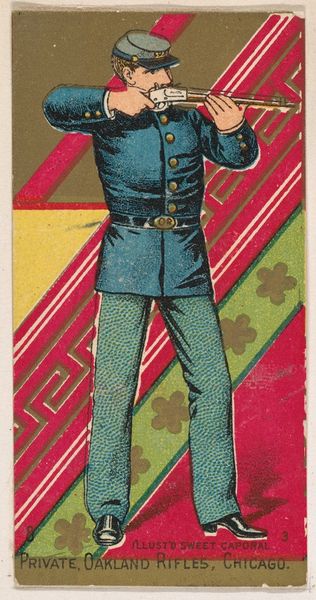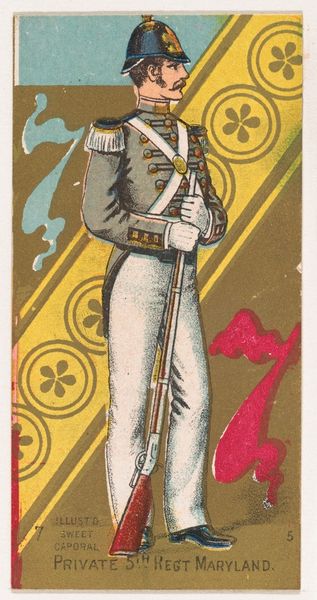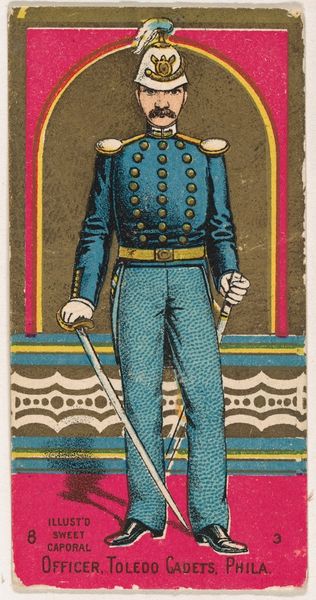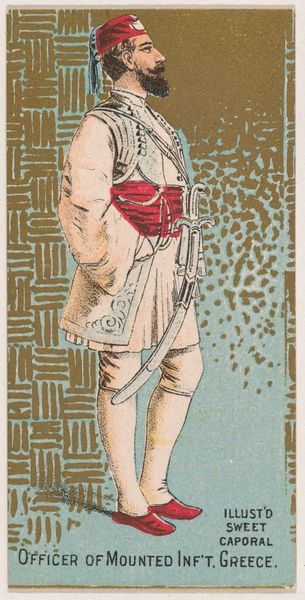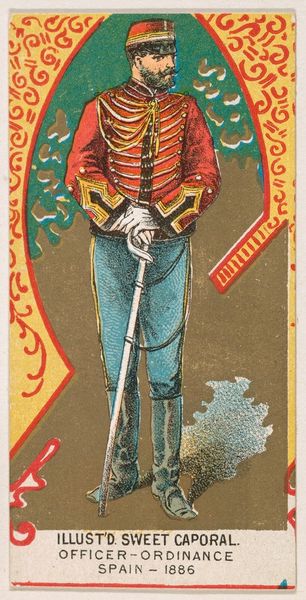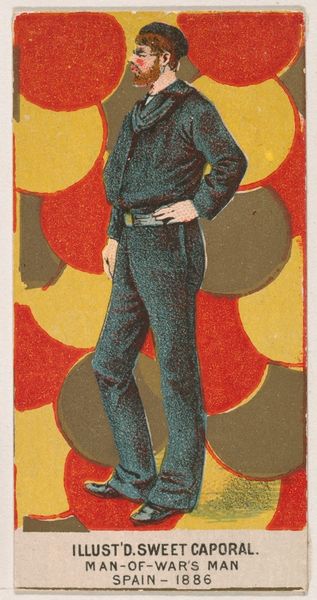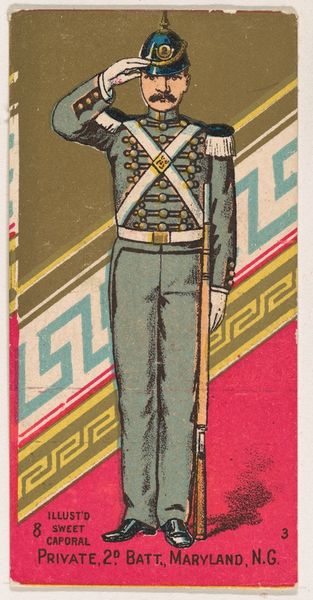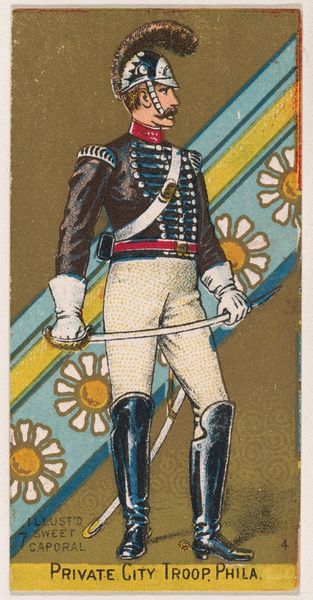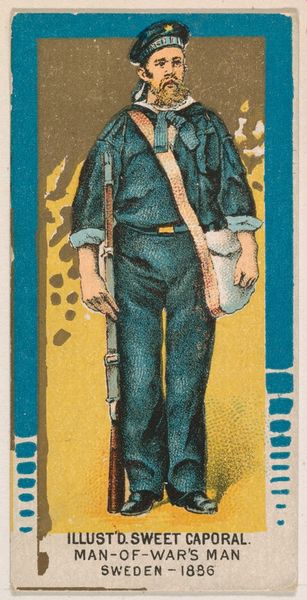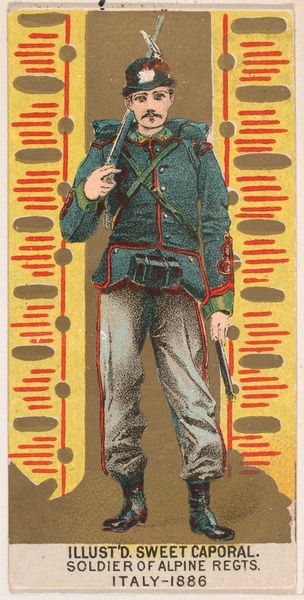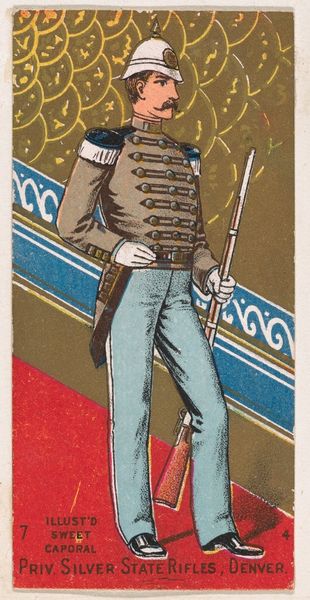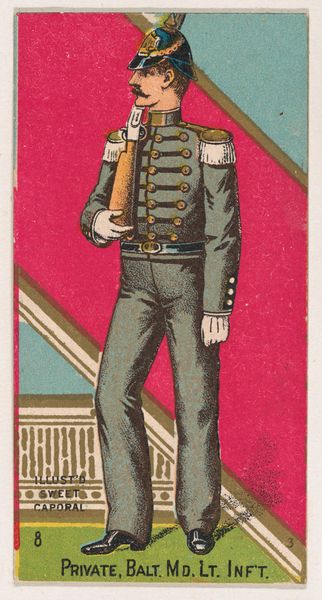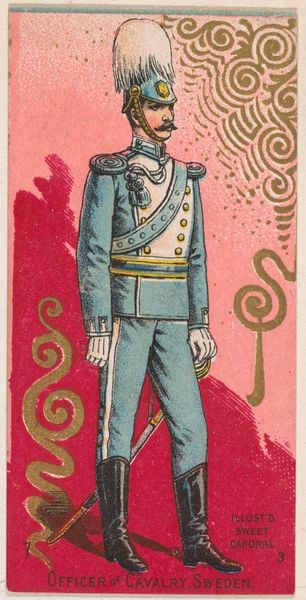
Gendarme, Spain, 1886, from the Military Series (N224) issued by Kinney Tobacco Company to promote Sweet Caporal Cigarettes 1888
0:00
0:00
drawing, print
#
portrait
#
drawing
# print
#
naive art
#
men
Dimensions: Sheet: 2 3/4 × 1 1/2 in. (7 × 3.8 cm)
Copyright: Public Domain
Curator: This drawing, created circa 1888, is titled "Gendarme, Spain, 1886, from the Military Series (N224)" and was a promotional piece by Kinney Tobacco Company for their Sweet Caporal Cigarettes. It's currently held at the Metropolitan Museum of Art. Editor: It strikes me as quite theatrical! The figure's pose is so formal, and the whole composition has a deliberately artificial air. It almost feels like a stage character. Curator: Precisely. Kinney Tobacco Company mass-produced these cards. This particular card employed printing, with emphasis on precise lines and a limited color palette—the red, black, and gold. The materials were relatively inexpensive. One should understand it less as fine art and more as early commercial material culture produced for widespread distribution. Editor: I’m more drawn to the imagery, of course. Look at how the uniform becomes a signifier. The colors and details point to authority, but the rendering, even with that formal salute, hints at vulnerability, especially given the phallic shapes arrayed in the background. It becomes more complicated the more you look at it. Curator: The context of its creation matters here. Late 19th century America was experiencing its own particular brand of nationalism and commercial expansion. Tobacco companies utilized imagery—including military figures—to connect smoking with strength, authority, and international appeal. This piece flattens national identity and masculine virtue to create value around the product. Editor: That makes perfect sense! These symbols worked then, even subconsciously, to associate cigarettes with specific positive attributes. The uniform isn't just fabric and trim, it's visual shorthand. I wonder how audiences today would react? Curator: I think it's fair to suggest the semiotics behind corporate marketing campaigns have changed, especially concerning tobacco products. We are much more skeptical now, which is perhaps a legacy of recognizing the persuasive power such ephemera held a century ago. Editor: Indeed, reflecting on this piece, it highlights the timeless way in which images shape, or rather try to shape, how we understand ourselves and our relationship to consumer culture. Curator: Agreed. It’s been useful to reframe what might initially seem like an artless cigarette card through the lens of labor, value, and commodity, but ultimately it’s the power of its images and signs that leave the most lasting impact.
Comments
No comments
Be the first to comment and join the conversation on the ultimate creative platform.
